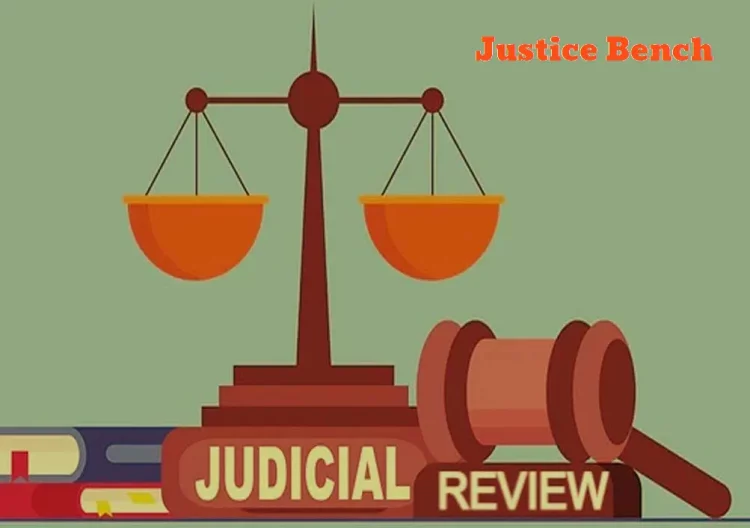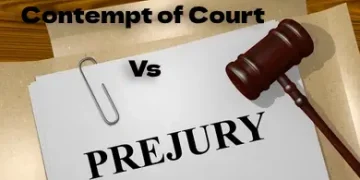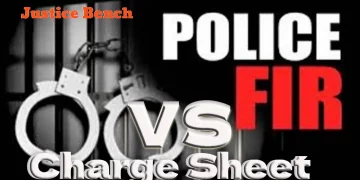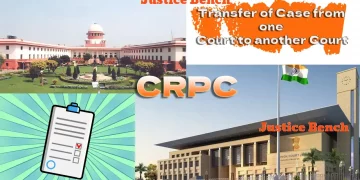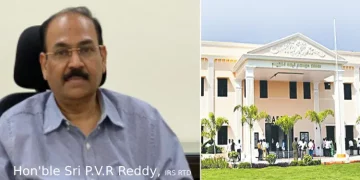Judicial Review is the authority of the Judiciary to assess and ascertain the legality of a Law or an Order. Numerous instances of judicial review exist, and this article provides further insights into the concept of Judicial Review along with relevant examples.
why has Judicial Review been in the news recently?
Recently, the Supreme Court (SC) declined to categorize the Central Vista project as an exceptional case warranting intensified or enhanced judicial scrutiny.
- The SC asserted that the government has the right to make mistakes or achieve victories in policy decisions without the court’s intervention, as long as it adheres to constitutional principles.
- The Central Vista project in New Delhi encompasses significant structures such as Rashtrapati Bhawan, Parliament House, North and South Block, India Gate, National Archives, among others.
- The Indian Constitution incorporated the concept of Judicial Review, drawing inspiration from the American Constitution.
Judicial review is a legal doctrine wherein the actions of the executive and legislative are examined and assessed by the judiciary. Despite the existence of the principle of the separation of powers among the executive, legislative, and judicial branches in India, the judiciary holds the authority to review the actions of the other two branches.
It is a legal process in which a judge evaluates the legality of a decision or action taken by a public entity. It involves questioning the process by which a decision was made, rather than the merits of the decision itself.
What are the Concepts of Law?
- Procedure Established by Law implies that a law is deemed valid if the proper legislative procedures have been adhered to.
- On the other hand, Due Process of Law is a principle that not only verifies the existence of a law regulating the deprivation of life and personal liberty but also ensures that the law is fair and just.
- In India, the legal system follows the Procedure Established by Law.
It is the authority exercised by the courts of a nation to scrutinize the activities of the legislative, executive, and administrative branches of the government to verify their compliance with the provisions of the country’s Constitution. Judicial review serves two crucial purposes: validating government actions and safeguarding the Constitution from any unjust intrusion by the government.
- Judicial review is regarded as an integral component of the constitution, as established in the Indira Gandhi vs Raj Narain Case in 1975.
- It encompasses the interpretational and observer roles of the Indian judiciary.
- The advent of Suo Moto cases and Public Interest Litigation (PIL), accompanied by the abandonment of the Locus Standi principle, has enabled the judiciary to address numerous public concerns, even in the absence of a complaint from the affected party.
- Judicial review encompasses the authority of the courts to scrutinize the constitutionality of actions taken by governmental entities and to deem them unconstitutional if they contravene or are incongruent with the fundamental tenets of the Constitution.
- This signifies that the legislative authority to enact laws is not unconditional, and the legitimacy and constitutionality of such laws are open to examination and evaluation by the judiciary.
- The Indian Constitution adopted the Judicial Review along the lines of the American Constitution.
- The judiciary’s engagement in Suo Moto cases and Public Interest Litigation (PIL), coupled with the abandonment of the Locus Standi principle, empowers the courts to step into numerous public matters, even in the absence of a formal complaint from the affected party.
Judicial Review and Constitution
- Under Article 13(2), neither the Union nor the States are permitted to enact laws that diminish or curtail any fundamental rights. Any legislation crafted in violation of this directive shall be deemed void to the extent of such contravention.
- Judicial review is invoked to guarantee and safeguard Fundamental Rights, which are assured in Part III of the Constitution.
- The authority of the Supreme Court of India to uphold these Rights is derived from Article 32 of the Constitution, granting citizens the right to directly petition the SC for remedies in cases of Fundamental Rights violations.
Classification of Judicial Review
They are classified into three categories.
- Reviews of Legislative Actions
- Review of Administrative Actions
- Review of Judicial Decisions
Reviews of Legislative Actions
This form of review entails the authority to verify that laws enacted by the legislature align with the provisions outlined in the Constitution.
Review of Administrative Actions
This serves as a mechanism to impose constitutional discipline on administrative agencies while they exercise their powers.
Review of Judicial Decisions
This aspect is evident in cases such as the Golaknath case, the bank nationalization case, the Minerva Mills case, the privy purse abolition case, and others.
What is the Importance of Judicial Review?
- It is crucial to uphold the supremacy of the Constitution.
- It safeguards against executive tyranny.
- It preserves the federal balance.
- It is necessary to curb the potential misuse of power by the legislature and executive.
- It ensures the independence of the judiciary.
- It safeguards the rights of the people.
What are the after-effects of Judicial Review
The judiciary has certain constraints on its exercise of judicial review. When the judiciary surpasses its defined boundaries and intervenes extensively in the executive’s responsibilities, it is referred to as judicial activism, and if taken too far, it can result in judicial overreach. The following are some of the limitations of judicial review.
- Judicial Review imposes constraints on the government’s operations, limited to assessing whether the correct procedural steps were followed in reaching a decision, not the decision itself.
- The judicial opinions rendered in one case become precedents for deciding subsequent cases.
- This authority is granted solely to higher courts such as the Supreme Court and High Courts.
- Excessive judicial interventions may erode public trust in the government’s integrity, quality, and effectiveness.
- The judiciary is restricted from interfering in political and policy matters unless necessary.
- Judicial review judgments may be influenced by personal or selfish motives, potentially harming the public at large.
- It can be seen as a violation of the constitutional limits on power when it overrides existing laws.
- In India, there is a system of separation of functions rather than strict adherence to the separation of powers.
- Although not strictly adhering to the concept of separation of powers, a system of checks and balances allows the judiciary to strike down unconstitutional laws passed by the legislature.
Provisions of Judicial Review under Constitutional
- While there is no explicit constitutional provision granting courts the authority to annul laws, the Constitution imposes specific constraints on each organ of the government.
- Violation of these limitations renders a law void. The court’s role is to determine whether any constitutional limitations have been breached or not.
- Some provisions in the constitution supporting the process of judicial review are:
- Article 372(1) establishes the judicial review of pre-constitution legislation.
- Article 13 stipulates that any law conflicting with Fundamental Rights provisions is void.
- Articles 32 and 226 designate the Supreme and High Courts as protectors and guarantors of fundamental rights.
- Articles 251 and 254 assert that in case of inconsistency between union and state laws, the state law is void.
- Article 246(3) ensures the state legislature’s exclusive powers on State List matters.
- Article 245 states that Parliament and State legislatures’ powers are subject to constitutional provisions.
- Articles 131-136 empower the court to adjudicate disputes and interpret constitutional provisions, with Supreme Court interpretations becoming law.
- Article 137 grants the SC special power to review its judgments or orders, allowing review in criminal cases only for apparent errors on the record.
Some important decisions for Judgement review:
Kesavananda Bharati case:
This ruling established the fundamental structure of the Constitution. The Supreme Court clarified that while no aspect of the Constitution, including Fundamental Rights, was exempt from Parliament’s amending authority, the “basic structure of the Constitution could not be dismantled even through a constitutional amendment.” This forms the foundation in Indian jurisprudence for the judiciary to nullify a parliamentary amendment contradicting the fundamental structure of the Constitution.
Golaknath case:
In this case, the key inquiries were whether an amendment constitutes a law and whether Fundamental Rights are amenable to amendment. The Supreme Court argued that Fundamental Rights are not subject to parliamentary alteration, as outlined in Article 13. Additionally, it asserted that amending Fundamental Rights would necessitate a new Constituent Assembly. The court emphasized that Article 368 outlines the procedure for amending the Constitution but does not grant Parliament the authority to amend the Constitution.
In the 2G scam, the Supreme Court invalidated 122 telecom licenses and the spectrum assigned to eight telecom companies due to procedural irregularities.
The Supreme Court imposed a comprehensive ban on firecrackers in the Delhi-NCR region in 2018, with specific exemptions.
The Supreme Court applied anti-terrorism laws to the alleged money launderer Hasan Ali Khan.

